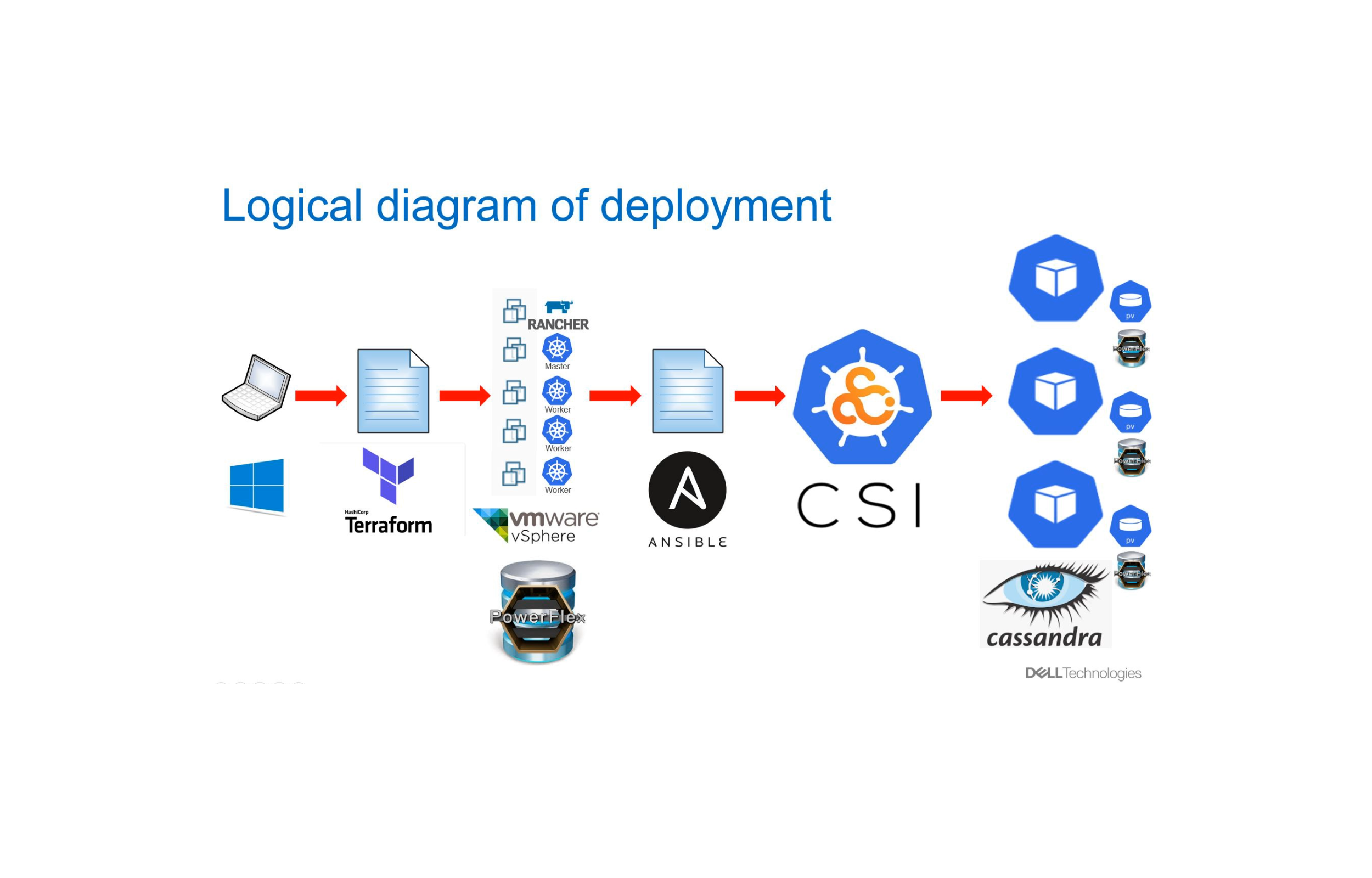ansible-dse
These Ansible playbooks will build a DataStax Enterprise cluster.
You can pre-build a Rackspace Cloud environment or run the playbooks against an existing environment.
It support multiple regions and multiple virtual datacenters per Region (to separate workloads).
[Installation] (id:installation)
See INSTALL.md for installation and build instructions.
[Requirements] (id:requirements)
-
Ansible >= 2.0
-
Expects CentOS 7 or Ubuntu 14 hosts
-
Building the Rackspace Cloud environment requires the
pyraxPython module: https://github.com/rackspace/pyrax
[Features] (id:features)
-
It supports static inventory if the environment is pre-built (
inventory/staticfile). -
Mixed cloud and static environments (hybrid) can be deployed as long as the networking permits it.
-
The data drive can be customized and can be put on top of Rackspace Cloud Block Storage.
-
Multiple workloads can be defined per each virtual datacenter.
-
OpsCenter can run on a separate node or alongside Cassandra and authentication is enabled by default.
-
It uses the
GossipingPropertyFileSnitchSnitch withprefer_local. -
With static inventory, nodes can be placed in different racks for a rack-aware topology.
[Configuration] (id:configuration)
A single configuration file, playbooks/groupvars/all is used to set global variables and the topology.
- replace user and pass with your datastax credentials (used when signing up at
https://academy.datastax.com/user/login):
dserepouser: 'user'
dserepopass: 'pass'
-
set the cluster name
-
set the virtual datacenter where OpsCenter runs. It can be on a separate datacenter or one shared with DSE nodes.
If opscenter is installed in a virtual datacenter shared with DSE, it will be installed on the first node.
-
replace the
listen_interface,broadcast_interfaceandrpc_interfacewith the correct network device names from the hosts:
listen_interface: 'eth1'
broadcast_interface: 'eth0'
rpc_interface: 'eth1'
-
for multi-region deployments,
broadcast_interfacemust be set to a reachable interface from the other regions. -
set the workloads for each virtual datacenter.
-
set cloud options if Cloud Servers need to be built.
[Inventory] (id:configuration)
-
The cloud environment requires the standard pyrax credentials file that looks like this:
[rackspace_cloud] username = my_username api_key = 01234567890abcdef
This file will be referenced in the
RAX_CREDS_FILEenvironment variable (orRAX_LON_CREDS_FILEfor the LON region).By default, the file is expected to be:
~/.raxpuband if you use LON region,~/.raxpub-ukmust also be set. -
When provisioning DSE on existing infrastructure edit
inventory/staticto include all hosts you expect to install DSE on and assign the hosts to the groups configured in the topology.
[Scripts] (id:scripts)
To provision a cloud environment, run the provision_cloud.sh script:
bash provision_cloud.sh
Then run the bootstrap and dse scripts (in this order):
bash bootstrap.sh bash dse.sh
[OpsCenter] (id:opscenter)
OpsCenter runs on the first dse-node or on its own separate node and can be accessed on port 8888.
The provided Ansible playbook will only open the firewall if you've added your workstation IP to allowed_external_ips variable in the playbooks/group_vars/all file.
Alternatively, you can access OpsCenter by either opening the firewall manually or by opening an SSH tunnel and pointing a browser to http://localhost:8888.
ssh root@{{ opscenter-node }} -L 8888:localhost:8888
A socks proxy could also be opened but the browser must be configured to use localhost port 12345 as a socks proxy.
ssh -D 12345 root@{{ opscenter-node }}
You'll then be able to navigate to http://opscenter-node:8888 in your configured browser and access all subsidiary links.



